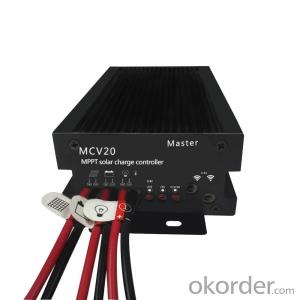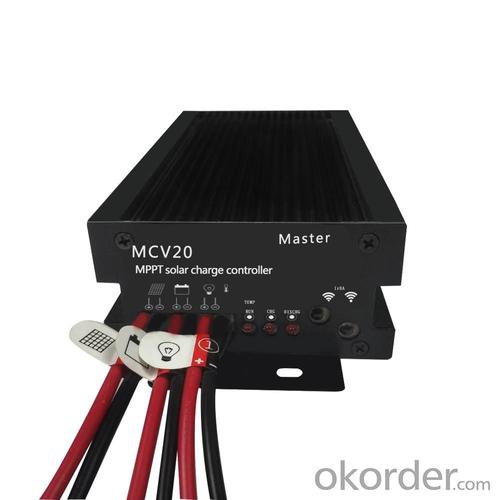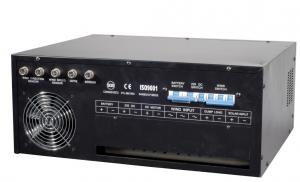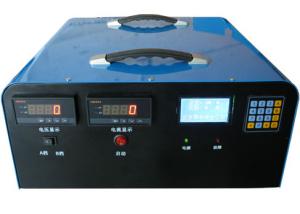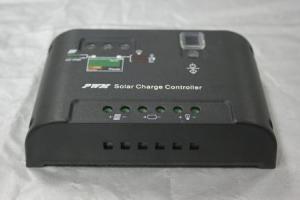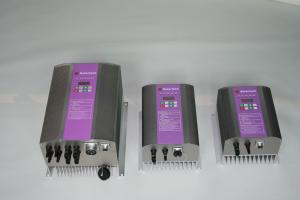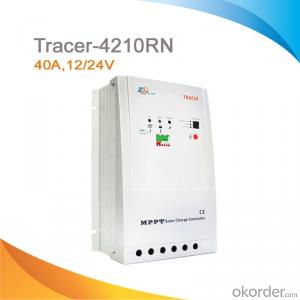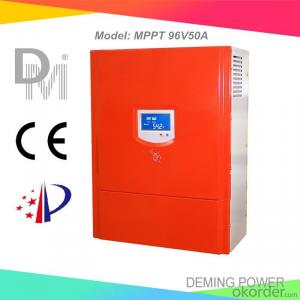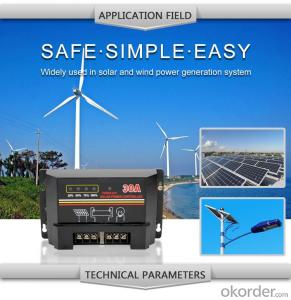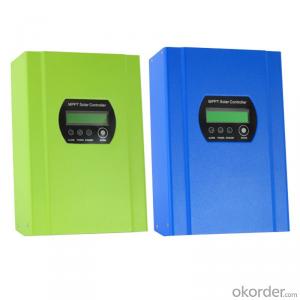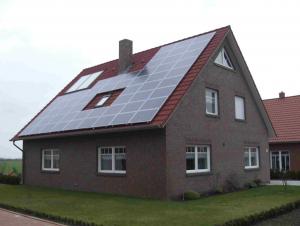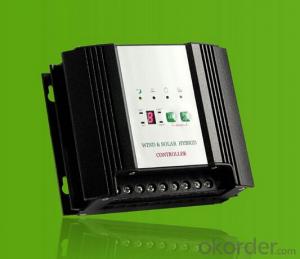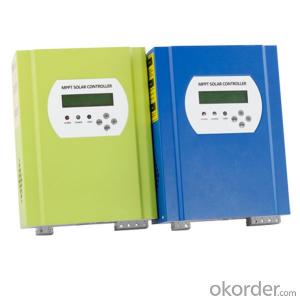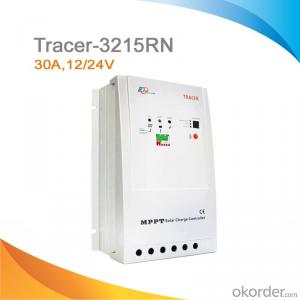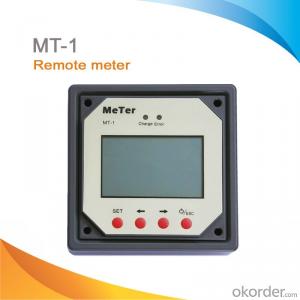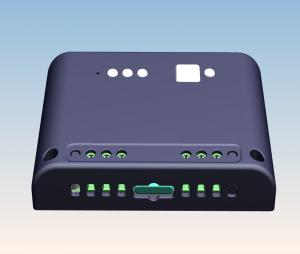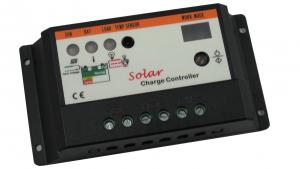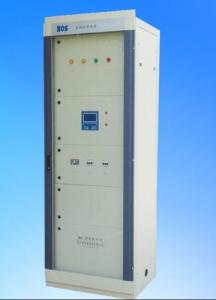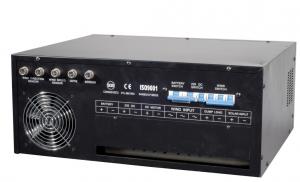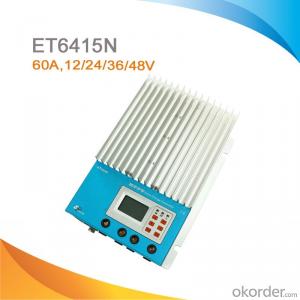30 Amp Rv Solar Panel Controllers - Intelligent 12V 24V Inverter Charger MPPT Solar Battery Charger Controller with Temperature Sensor
- Loading Port:
- China main port
- Payment Terms:
- TT OR LC
- Min Order Qty:
- 1 pc
- Supply Capability:
- 10000 pc/month
OKorder Service Pledge
OKorder Financial Service
You Might Also Like
1.Features :
1). Professional design to promote system reliability
2).High MPPT tracking efficiency up to ≥99.9% and high system efficiency up to 98%, Maximizes solar panel power output & reduces system costs.
3). Using industrial DSP digital technology, without any adjustable resistance, strong anti-interference ability, no aging and drift.
4).High LED driving and charging efficiency, significantly reduce the product temperature.
5).Three phase time charge battery, which contains MPPT charge, constant voltage charge and float charge.
6)Significantly extends the battery lifetime up to 50% base on intelligent temperature compensation charge and discharge management.
7)Intelligent energy management of battery ensures that the battery charge & discharge in shallow state which significantly extend the battery life.
8). User programmable for battery types, load control etc.
9).Infrared wireless communications, connecting with a handheld remote control for easy installation.
10). IP68 Waterproof without any button.
2. Technical parameters
| Item | Content | Model MCV20 | Unit |
| Battery Parameters | System voltage | 12/24V Auto recognition | - |
| Max. charge current | 20 | A | |
| Charge voltage range | 8~30 | V | |
| MPPT charge@25°C | ≤14.4(12V),≤28.8(24V),≤57.6(48V) | V | |
| Boost charge @25°C | 14.4(12V),28.8(24V),57.6(48V) | V | |
| Float charge @25°C | 13.8(12V),27.6(24V),55.2(48V) | V | |
| Deep discharge protection, Cut-off voltage@25°C | 10.8(12V),21.6(24V),44(48V) | V | |
| Reconnect voltage@25°C | 11.8(12V),23.6(24V),48(48V) | V | |
| Battery Temperature compensation | -4mV/°C/2V | - | |
| Solar panel parameters | Max panel voltage | 100 | V |
| Start voltage | ≤85 | V | |
| Max.panel power | 260(12V), 520(24V) | W | |
| MPPT track range | 15≤Vp≤75(12V), 30≤Vp≤75(24V) | V | |
| Output parameters | Output current | 20 | A |
| Overload, short circuit protection | 105%~150% Times the rated current 10 minutes 150%~200% Times the rated current 1 minutes ≥200% Times the rated current 20 millisecond | - | |
| Light control function | Yes | - | |
| Time control function | Yes | - | |
| System parameters | System grounding design | Co design | - |
| MPPT efficiency | ≥99.9% | - | |
| Max.charge efficiency | 98.50% | - | |
| Consumption in sleep mode | ≤0.5W | mA | |
| Communication | Infrared | - | |
| History Data | 1 | Year | |
| Operating temp. | -25~60 | °C | |
| Operating Humidity | 0~100% | RH |
3. Image

4. FAQ
Q:DO YOU HAVE ANY CERTIFICATION FOR YOUR PRODUCTS?
A:We have ISO9001:2015,CE、RoHS certifications for all of our products.
Q:DO YOU HAVE MOQ FOR PLACE ORDER?
A:Low MOQ,1pe for sample checking is availabl
- Q: Do solar controllers require regular maintenance?
- Yes, solar controllers do require regular maintenance. This typically involves checking the connections, cleaning any debris or dust, inspecting the wiring, and ensuring proper functioning of the controller. Regular maintenance helps to optimize performance and prolong the lifespan of the solar controller.
- Q: Can a solar controller be used with MPPT (Maximum Power Point Tracking) technology?
- Yes, a solar controller can be used with MPPT (Maximum Power Point Tracking) technology. In fact, MPPT technology is often incorporated into solar controllers to optimize the power output from solar panels by tracking and adjusting to the maximum power point of the panel. This allows for more efficient energy conversion and increased overall system performance.
- Q: What is a solar controller?
- Solar controller uses high-speed CPU microprocessor and high-precision A / D analog-to-digital converter, is a computer data acquisition and monitoring and control system. It can collect the working data of the PV station in real time, obtain the working information of the PV station at any time, and accumulate the historical data of the PV station in detail, and provide the accurate and reliable evaluation of the reliability of the PV system design and the reliability of the quality of the inspection system Full basis. In addition, the solar controller also has a serial communication data transmission function, can be a number of photovoltaic systems sub-station for centralized management and remote control.
- Q: Can a solar controller be used with solar-powered indoor manufacturing systems?
- Yes, a solar controller can be used with solar-powered indoor manufacturing systems. A solar controller is an essential component of a solar power system as it regulates the flow of electricity between the solar panels and the batteries, ensuring that the batteries are charged efficiently and preventing overcharging or damage to the system. In the case of solar-powered indoor manufacturing systems, the solar controller would still be necessary to manage the flow of energy from the solar panels to the batteries, even if the manufacturing processes are conducted indoors. The solar controller would help optimize the use of solar energy and ensure that the system operates smoothly and efficiently, regardless of the location of the manufacturing facility.
- Q: How does a solar controller handle battery reverse polarity protection?
- A solar controller handles battery reverse polarity protection by incorporating built-in circuitry that prevents the flow of current to the battery in case it is connected with the wrong polarity. This protection mechanism ensures the safety of the battery and the solar controller by preventing potential damage caused by reverse polarity.
- Q: Can a solar controller be used with solar panel shading analysis systems?
- No, a solar controller cannot be used with solar panel shading analysis systems. A solar controller is used to regulate and optimize the charging of batteries in a solar power system and does not have the capability to analyze shading on solar panels. Shading analysis systems are specifically designed to assess the impact of shading on solar panels and determine the optimal placement and orientation of the panels for maximum energy production.
- Q: How do I determine the maximum load output voltage for a solar controller in a grid-tied system?
- Determining the maximum load output voltage for a solar controller in a grid-tied system requires consideration of several important factors. First and foremost, it is necessary to have a clear understanding of the specifications and limitations of your solar controller. To acquire this knowledge, refer to the technical documentation or user manual provided by the manufacturer. Pay special attention to the maximum load output voltage rating mentioned in the specifications. This rating represents the highest voltage that the controller can safely deliver to the load. Following that, it is crucial to take into account the voltage requirements of the load itself. Determine the voltage range or specific voltage rating that the load can handle. This information can typically be found in the load's technical specifications or user manual. Ensure that the maximum load output voltage of the solar controller falls within the acceptable range for your particular load. Additionally, it is essential to consider the overall design and configuration of the system. If you have multiple solar panels connected in series, their combined voltage will directly impact the maximum load output voltage of the solar controller. Consequently, calculate the total voltage output of your solar panels and verify that it falls within the acceptable limit of your solar controller. Finally, it is imperative to adhere to any local regulations or codes that pertain to grid-tied systems. Certain regions have specific guidelines in place regarding maximum voltage limits for safety purposes. Consult these regulations to ensure that the maximum load output voltage of your solar controller complies with the local requirements. By taking into account the solar controller's specifications, load voltage requirements, system configuration, and local regulations, you can effectively determine the maximum load output voltage for a solar controller in a grid-tied system.
- Q: Can a solar controller be used in a hybrid solar power system?
- Yes, a solar controller can be used in a hybrid solar power system. A solar controller helps regulate the charging and discharging of batteries in a solar system, ensuring optimal performance and extending battery life. In a hybrid solar power system, where additional energy sources like wind or diesel generators are also used, a solar controller can still be utilized to manage the solar component of the system.
- Q: How does a solar controller handle the logging of system data?
- A solar controller handles the logging of system data by continuously monitoring and recording various parameters such as solar panel voltage, battery voltage, charging current, load current, and temperature. It stores this data in its memory or an external storage device, allowing users to access and analyze the information for system performance evaluation and troubleshooting purposes.
- Q: How does a solar controller handle battery under-voltage protection?
- A solar controller handles battery under-voltage protection by continuously monitoring the voltage level of the battery. If the voltage drops below a certain threshold, indicating that the battery is being discharged too much, the controller will automatically disconnect the solar panels from the battery to prevent further depletion. This protects the battery from irreversible damage and prolongs its lifespan.
Send your message to us
30 Amp Rv Solar Panel Controllers - Intelligent 12V 24V Inverter Charger MPPT Solar Battery Charger Controller with Temperature Sensor
- Loading Port:
- China main port
- Payment Terms:
- TT OR LC
- Min Order Qty:
- 1 pc
- Supply Capability:
- 10000 pc/month
OKorder Service Pledge
OKorder Financial Service
Similar products
Hot products
Hot Searches
Related keywords
